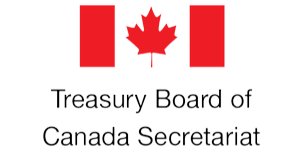
The Treasury Board of Canada Secretariat’s 2023-26 Data Strategy marks an important shift in how the Government of Canada manages and uses data. As both governments and businesses recognize the growing value of data, this strategy focuses on making better decisions, encouraging innovation, and improving services across the federal public service. By setting a clear vision for how data should be governed, shared, and used, the strategy positions Canada for long-term success in the digital age.
1. Laying the Foundation (2023-2024)
The first year of the Data Strategy set the groundwork for improving data management across federal departments. One of the key steps was establishing a data governance framework, including the Assistant Deputy Minister Committee on Data and Information, which brings leaders together to collaborate. This governance framework clarifies who is responsible for what, ensuring that data management is efficient and transparent, helping departments share and reuse data easily.
In addition, the creation of shared standards, such as the Government of Canada Enterprise Data Reference Standard and the Standard for Managing Metadata, has been essential in ensuring data consistency and quality. These efforts are the backbone of the strategy, providing all departments with a common approach to data management.
2. Focusing on Interoperability in Year Two (2024-2025)
As the Data Strategy enters its second year, the focus will be on making data more interoperable, meaning it can be easily shared and used across departments. This will improve collaboration and decision-making. To achieve this, the government is developing more complex data standards, including those that address the unique needs of Indigenous communities, as outlined in the Truth and Reconciliation Commission’s Call to Action 17.
Another important aspect of this phase is improving the data skills of public service employees. The strategy will offer training on data basics and ethical data usage to ensure that employees can effectively work with data in their roles.
3. Tackling Challenges: Privacy, Ethics, and AI
A forward-looking part of the strategy is its focus on the ethical and responsible use of data. With more public sector decisions being driven by data, it’s crucial to protect data privacy and security while using it ethically. The strategy includes a framework for managing data responsibly, based on principles like "open by design," while ensuring strong privacy safeguards.
The strategy also acknowledges the growing role of artificial intelligence (AI) in government operations. By laying the foundation for an AI strategy, it highlights the need to prepare public service employees for the challenges and opportunities AI will bring, ensuring its responsible use in the public sector.
Looking Ahead: Challenges and Opportunities
While the strategy has made significant progress, there are still areas that need improvement. These include refining governance structures, improving data access, and addressing privacy concerns. The strategy also recognizes the need for cultural change within the government to fully embrace data-driven decision-making. As AI becomes more prominent, equipping employees with the right skills and tools will be crucial for its successful integration.
The overall goal is clear: to build a strong data culture within the federal public service, enhancing collaboration, improving service delivery, and supporting innovation. As the strategy evolves, the Government of Canada aims to unlock the full potential of its vast data resources.
Conclusion
 The Treasury Board of Canada Secretariat’s Data Strategy is a forward-thinking plan aimed at strengthening data management, promoting innovation, and preparing for the future.
The Treasury Board of Canada Secretariat’s Data Strategy is a forward-thinking plan aimed at strengthening data management, promoting innovation, and preparing for the future.
If you're interested in exploring the full scope of this strategy and how it might shape the future of public sector operations, we encourage you to read the strategy in full.





